
Dressed in red trousers and a black shirt and wearing an indigenous necklace, the representative of the German Development Bank KFW, Christiane Ehringhaus, praised the pioneerism of Acre to an audience of local residents on the final day of the “Seminar to Assess the Results of the REDD Early Movers Program in Acre”. The event, complete with a group photograph, took place in July at the Resort Hotel in the state capital Rio Branco. On the agenda were the results of the model program of the government for what is conventionally called the green economy, a term used worldwide to combine economic development with environmental preservation. A handful of indigenous people and residents of local communities shared the room with a number of state and national lawmakers and a few others. One was Senator Jorge Viana, president of the Joint Commission on Climate Change in the National Congress, former state governor and brother of the current governor Tião Viana. The Viana brothers are responsible for selling Acre’s model of green economy to the world.
“We are very excited to be able to use these valuable lessons from Acre,” said Ehringhaus, “and we are already taking advantage of these lessons to establish the program in other states”. Mato Grosso has already signed up.
Acre, a state treated with contempt by so many Brazilians, wants to set an environmental example for the world. On the border with Peru and Bolivia, the state has just over 800,000 inhabitants and is ranked 25th in terms of Gross Domestic Product. “We’re not concerned about vanity. If our experience can show Brazil and the world that it’s possible to preserve and develop at the same time, that will be terrific,” Governor Tião Viana told the Repórter Brasil team. The green development plan was introduced when the two brothers from the leftist Workers Party (PT) came to power in 1999. In 2010, a law was passed to regulate the System of Incentives for Environmental Services, a long-winded plan covering 30 pages, front and back, that both praises an alleged decade-long environmental pioneerism in Acre and lists a number of new projects. The first item on the list is the promotion of environmental carbon services (reduction of CO2 emissions in exchange for incentives). KFW, the German government’s development bank, appears as one of the partners in the plan. In 2012, the government received 25 million euros from the German bank, the equivalent of almost R$90 million for projects to reduce CO2 emissions.
At the same event, the state environment secretary Carlos Edegard de Deus claimed that another goal shared by the latest administrations is the “inclusion of the neglected: indians, rubber tappers, riverside peoples and land reform settlers. We have always fought for the inclusion of everyone, provided they adhere to the principles of sustainability.” Intentional or not, the use of the word “provided” reveals the existence of a condition for these people to be included in the government policy. And this condition is to follow the rules of sustainability created and defended by the Viana brothers. These rules, which all place restrictions on human activity, were taken from international agreements that guarantee financing for projects that preserve forests and that also enable the sale of carbon to polluting companies in other parts of the world, particularly in developed countries.
The first complaints about the “wonders of the green economy” did not take long to surface, said Winnie Overbeek, international coordinator of the World Rainforest Movement (WRM). In 2011, several organizations, including WRM, participated in an investigation conducted by the Dhesca Platform in Acre and identified “a series of negative socio-political, economic and environmental impacts, in particular on traditional lands and populations”.
Just ask the traditional peoples. They have no idea where Acre invested the thousands of euros it received from the German government – Winnie Overbeek, International Coordinator of the World Rainforest Movement
“We found a series of environmental and social injustices caused by a government plan that aspires to be a model for the world,” said Overbeek. “Just ask the traditional peoples. They have no idea where Acre invested the thousands of euros it received from the German government.”
The lack of dialogue with the people who live in the forest is one of the criticisms of the program made by scholars, local leaders and extractivist communities. They say the plan does not contribute to the preservation of the forest. Besides not helping, these groups claim the program is a burden, by creating new pressures on the traditional inhabitants who are forced to make changes to their lifestyle, since they are prevented from hunting, fishing or using the forest for their livelihood.
The program is the exact opposite of the philosophy of Chico Mendes, according to the agronomist Elder Andrade de Paula, one of the main opponents of the environmentalism of the Viana brothers. The history of the rubber tapper and union leader is key to understanding the land conflict in Acre that endures to this day. The son of rubber tappers, Mendes was the leading figure in the creation of a union, association and council in defense of the extractivists. He proposed that a lifestyle integrated with the forest was the best way to preserve it – and he always opposed encroachment by large landowners. He was killed in 1988 in front of his house in Xapuri. The rancher Darly Alves da Silva was found guilty of ordering the crime. One of his farms had been expropriated to form an extractive reserve.
Expansion of Deforestation
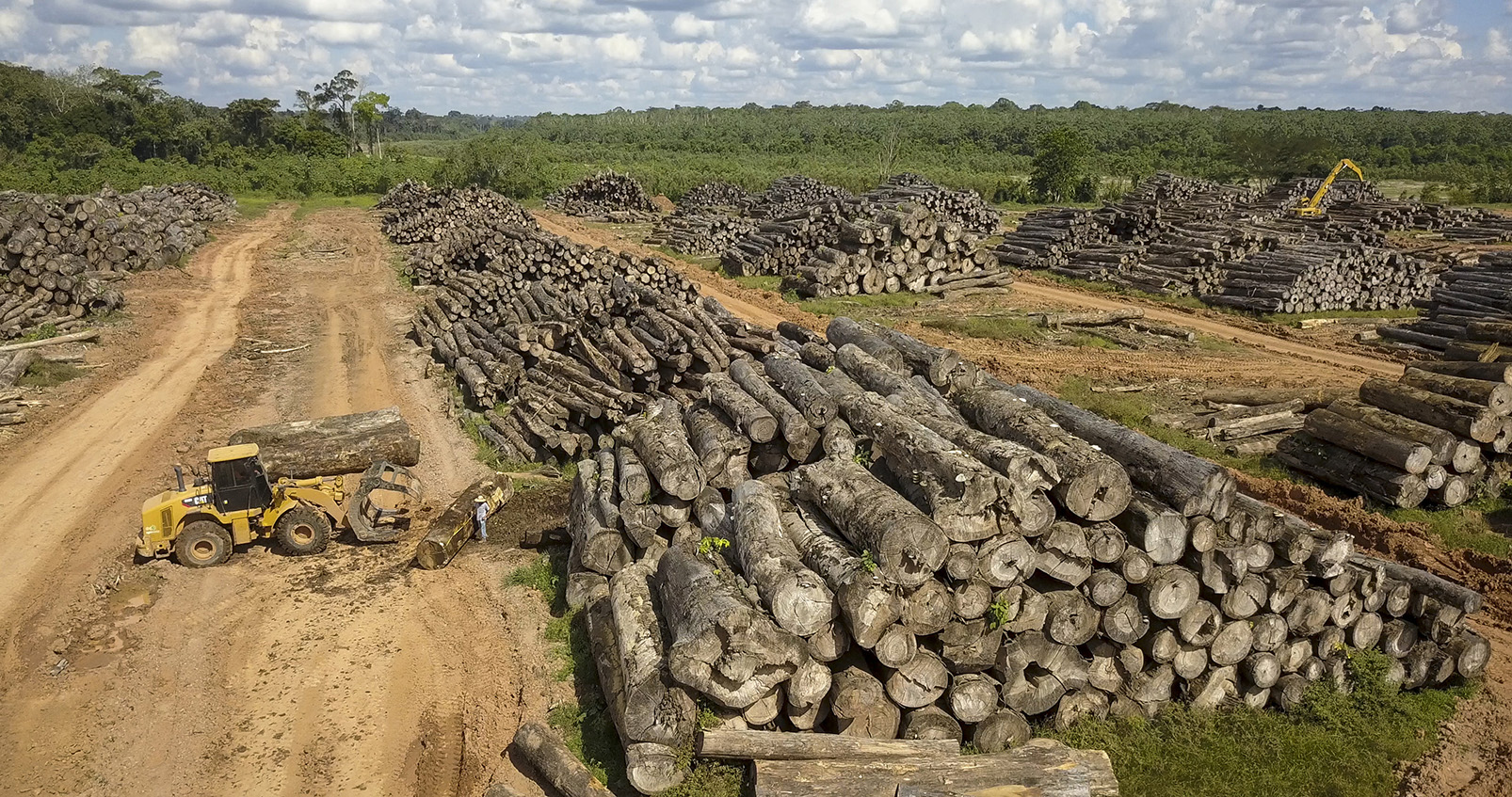
In the penultimate week of May, in Xapuri, indigenous and extractivist leaders met for three days to denounce the impacts of the Acre government’s green economy. In a letter released after the meeting, they said the policy was imposed “in an authoritarian manner and without consulting the communities in advance”. Since they oppose the expansion, they say they face pressure and threats from the “owners of power in Acre”.
The agronomist Andrade, a professor and researcher at the Philosophy and Human Sciences Center of the Federal University of Acre, said that by presenting itself as a model for environmental policies the state government is being hypocritical, since it is masking old problems in the Amazon region. “The green economy, the new term that has replaced the overused ‘sustainable development’, is an excuse to continue doing what has always been done: produce unsustainably in a social and environmental sense.”
The researcher’s criticisms are backed up by environmental data, which show that Acre is reducing deforestation at a slower pace than the rest of the Amazon region, while the number of cattle continues to rise.
Last year, Acre did the second most amount of deforestation in the Amazon, according to the National Space Research Institute. The felling of forests rose 47% in the state. Despite the increase, the figure was in line with government targets, which are to keep total annual deforestation below 434 square kilometers.
In 2016, the Amazon lost nearly 8,000 square kilometers of forest, the most since 2008. This increase prompted Norway, the main contributor to a trust to conserve the forest, to cut its transfer of funds to Brazil almost by half. The country is the world’s 15th largest producer of oil – which contributes to global warming. This is why it has become an important donor for forest preservation, but only for green economy projects.
In addition to deforestation, the increase in land occupation is another indicator that the economy of Acre is not so green. In 2001, Acre had more than 18,000 farms registered on 2.9 million hectares of land. Large landowners (who have more than a thousand hectares) represented 2% of the farms and they occupied 58% of the hectares. In 2016, the number of registered properties nearly doubled – to 37,000 – and the amount of occupied land quadrupled – to 11.6 million hectares. Despite this increase, the concentration of land has remained the same: large landowners still represent 2% of the farms and they occupy 56% of the total area. “Concentration leads to deforestation and an expansion of grazing land. In other words, latifundia,” said the agronomist Andrade. According to the World Wildlife Fund (WWF), 85% of the deforested land in Acre is used for grazing.
The government’s technical advisory office disputed the data from the Land Reform Agency (Incra) presented by the agronomist illustrating the concentration of land ownership. It said it was not possible to know with any accuracy how many farms there are in the state. On the deforestation, the governor said the increase was a “one-off bounce”, and blamed small farmers. “They’re the ones that are still driving the deforestation,” he said. Viana claimed that Acre is one of the most preserved states: 87% of the forest is standing and since 2002 it has reduced deforestation by 64%, according to data from the Space Science Institute.
As far as Governor Tião Viana is concerned, livestock farming is compatible with environmental preservation. He wants to triple the number of cattle without increasing the grazing area, which would mean raising up to 10 animals per hectare. Currently, the land holds less than 2 cows per hectare.
One of the showpieces of the green economy in Acre is a program that regulates REDD (Reducing Emissions from Deforestation and Forest Degradation), an international carbon retention system. Since 2010, the government has committed to cut deforestation and therefore emit less CO2, one of the main causes of global warming. Everything below the target is considered non-emitted carbon and can be sold, for example, to companies that pollute the environment, even in other parts of the world. The measurement of the carbon amount is conducted using internationally established mathematical calculations and this imposes a series of restrictions on the use of the forest by communities that depend on it for their survival. A deal is currently being negotiated that will permit Californian companies to exceed the pollution targets in the United States and offset up to 4% of the excess emissions buying CO2 credits that Acre did not emit.
“Carbon trading is nothing more than purchasing the right to pollute,” said Andrade. “In the case of the agreement with California, the population there loses because they will continue to live in a polluted environment, and the traditional peoples of Acre also lose, because their traditional lifestyle is altered.”
Even when large areas are not deforested, complaints of forest degradation are received due to the selective felling of certain species of trees. Degradation is not measured by satellite surveillance, but it is felt first hand by the people who live off the forest. Besides the impact, these populations are prevented by the sustainability rules of the green economy from exercising their subsistence activities.
The rules of sustainability do not affect large farmers or private businesses, but instead the traditional populations – Winnie Overbeek, International Coordinator of the World Rainforest Movement
Sitting next to Andrade by a lake inhabited by capybaras on the campus of the Federal University of Acre in Rio Branco, the coordinator of the Catholic Church’s Pastoral Land Commission (CPT) in Acre, Darlene Braga, said that the pressures imposed by the green economy prevent traditional peoples from hunting and requires them to take part in an economic system that many of them do not understand. “What we see are families being driven out, scared of losing the piece of ground where they live and the right to use the land”.
Overbeek agrees: “Our research shows that this is the case the world over. The rules of sustainability do not affect large farmers or private businesses, but instead the traditional populations. Why? Because they don’t have political power.”
Extractivism vs. planted forests
The latex condom factory Natex is located at the entrance to Xapuri, a small town that is calm and well looked after with colorful wooden stilt houses suspended over the cloudy water of the Acre River – where Chico Mendes was born, lived and was killed. The factory, which opened in 2008 and belongs to the Acre State Technology Foundation, is a source of pride for the government when it talks about policies for rubber tappers. The project is supposed to stimulate the system of “planted forests” without completely ending rubber extractivism, which many traditional rubber tappers refuse to give up. But it has been the target of criticism.
“There are various ways to introduce this idea of a green economy without it appearing as such,” said Andrade. Production by Natex, which supplies the Ministry of Health in northern Brazil, is based on local latex whose price is subsidized (in part with money from the agreement with Germany). Andrade said that last year, Natex paid around R$7.80 per kilo of latex, of which R$3.80 was for the product and R$4 in subsidies. However, to receive the subsidy, rubber tappers had to sign a contract with the government “to observe the rites of the control mechanism of the territory”, said Andrade, pointing out that this is one of the mechanisms used by the state government to institutionalize the philosophy of the program. When contacted, Natex informed that the contracting of the rubber tappers is conducted by the local cooperative Cooperacre, which is responsible for the payment. It did not comment on the contract. The cooperative did not respond to the contact of our reporters.
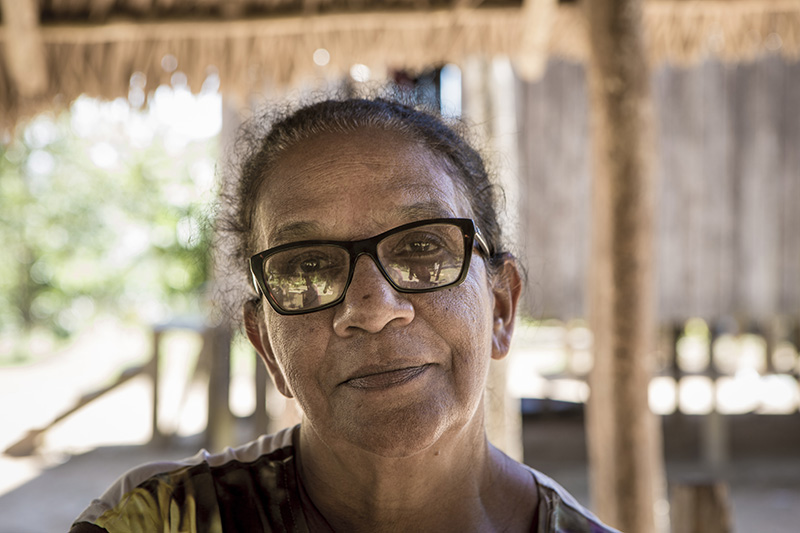
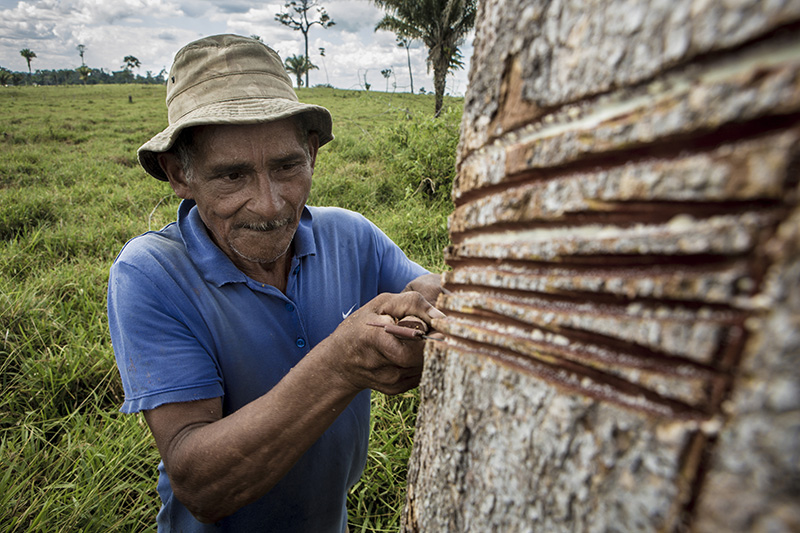
“Rubber extractivism has died and the government, to date, has not presented an alternative form of income generation to replace the one that rubber extractivism provided,” said 62-year-old Dercy Teles Cunha, leader of the rubber tapper movement. Cunha is the first woman to be president of the Rural Workers Union of Xapuri. According to her, most of the latex purchased by Natex comes from rubber plantations (the government denies this and claims that 70% of the rubber comes from native trees). This, she explains, has left the traditional rubber tappers without a trade and does not contribute to the preservation of the Amazon.
The Chico Mendes Extractive Reserve (Resex) was founded in 1990, two years after the death of the rubber tapper and trade union leader, and to this day it serves as a model for the federal government when it comes to this type of conservation area. According to the Chico Mendes Institute for Biodiversity Conservation (ICMBio), a federal agency, some 10,000 people live in the reserve on an area of more than 900,000 hectares that spans seven different municipalities and includes 46 rubber tapping areas. Resex was created during a turbulent time of conflict between rubber tappers and the expansion of livestock and to this day it faces various forms of pressures of threats.
The forest is a patchwork of species that man could never hope to rebuild – Dercy Teles Cunha, President of the Rural Workers Union of Xapuri
“The forest is a patchwork of species that man could never hope to rebuild,” said Cunha, sitting in front of her house on a dirt street, refuting the idea of “planted forest”. The rubber tappers and their children still use the forest for hunting, gathering nuts and other activities. The clearest impact of the threats on the forest, explained Cunha, can be seen in the extraction of Brazil nuts. The tree needs to be pollinated by a flying beetle – the mamangá – to survive. Since it can only fly short distances, it needs the lower trees to climb up to the high canopies of the Brazil nut tree. In other words, without the forest, there are no Brazil nuts.
Cunha said she is worried that the countryside will turn into a wasteland. “Then what will be left for the people who live in the forest? Working to pay for the latest generation mobile phones that young people want? What pays for them are the calves that you can sell when they are seven months old for R$700 or R$800.” The expansion of livestock farming is obvious to anyone who visits Xapuri. Grazing land competes with the forest even in the Chico Mendes Extractive Reserve.
The community forest management plans, encouraged by the government and authorized by associations inside Resex in partnership with ICMBio, are also the target of criticisms. According to the government, only the trees with the highest commercial value are removed, in a rotational system whereby after specific trees are felled the area is left untouched for 30 years to “recover”. The agronomist Andrade says the government calculations are vague, as is the process. “Who certifies that any given tree is more than thirty years old? Who measures the forest degradation, which does not appear on the deforestation map?”
Operating in Acre is Agrocortex, the only logging company authorized to explore mahogany in the country. The extraction and sale of this wood, which is red and resistant, became a symbol of the forest devastation in the 1980s and 1990s and it was banned until 2011. In that year, Batisflor Florestal LTDA, the owner of the Fazenda Seringal Novo Macapá farm, managed to secure the approval of the environmental watchdog Ibama for a management plan for thirty years. In 2014, Agrocortex started to operate as the executor of the activities, a status it maintained until 2016. In April of that year, it became the owner of the project. At the moment, Agrocortex is the only company authorized to conduct mahogany management in Brazil.
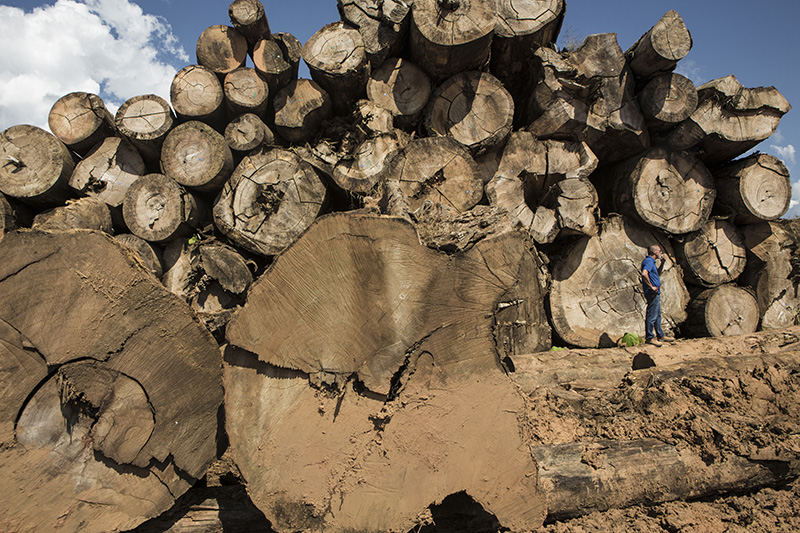
The Repórter Brasil team visited the headquarters of the company in Acre. Agrocortex, which belongs to the Portuguese group Domínio Capital, has authorization to explore mahogany and other woods in an area of 190,000 hectares in the municipalities of Manoel Urbano, in Acre, and Boca do Acre and Pauini, in the state of Amazonas.
The international market is the main buyer, so much so that the company’s website is in English. The cubic meter of mahogany fetches twice or three times the price of other native woods with similar characteristics. The mission of Agrocortex, according to the company’s own website, is “to be a world reference in the sustainable management of tropical forests within a perspective of multiple use of the forest”. All the mahogany extracted by the company is certified by the Forest Stewardship Council (FSC). When questioned about income and management of mahogany, Agrocortex did not respond to our contact by the time of publication.
Acre’s management plan, one of the pillars of the green economy, was investigated by Overbeek, of the World Rainforest Movement. “It is not a sustainable practice in the sense of not damaging the forest and neither does it benefit the communities. The big logging companies are the ones that benefit,” he said.
Afterwards, you can’t cut down a single tree or even take a stick to make a hoe handle – João Zacarias de Souza, Son of rubber tappers
The logging companies are responsible for the management and restrictions are placed on the use of the forest by the communities. This is what happened in Resex, where the son of rubber tappers João Zacarias de Souza lives. There, things have not turned out to the satisfaction of Souza and his neighbors. They say the company charged for the service of removing and transporting the wood and, when everything was done, very little was left for the traditional inhabitants of the land. The only ones to profit, they said, were the logging companies and it was all done under the guise of sustainability. The rubber tappers said that, for allowing the forest management on an area of 40 hectares, a family received nearly R$6,000 for a 1-year period. “Afterwards, you can’t cut down a single tree or even take a stick to make a hoe handle,” said Souza.
The inhabitants of the land say they earn R$60 per cubic meter of wood, while this same cubic meter is sold for R$1,000. Although the difference is huge, the government justifies the amount. According to the deputy environment secretary João Paulo Mastrangelo, the amount paid for standing timber varies from R$30 to R$70, while sawn timber with the lowest commercial value is sold for nearly R$500. However, he also pointed out that the company bears all the production costs and that only 20% to 55% of each log is actually turned into timber. This, said Mastrangelo, results in a profit of 10% for the company that explores forest management.
Despite the low return, many people accepted. The government offered, as an incentive, 40 hours of excavator work to dig small dams. The idea was to turn the region into a fish farming hub. But nothing ever came of it. The excavators worked less time than promised and the dams were too shallow. “The government people come here and they think everything is just fine. They say these dams worked out well,” said João Zacarias de Souza.
When questioned on this matter, Governor Tião Viana said the problem was a misunderstanding by the residents. “The plan was for a partnership. They would get 40 hours but they had to provide the fuel. But they didn’t have the money for the fuel,” said Viana, for whom the promotion of fish farming is one of the campaigns of his government.

Exit rubber tappers, enter livestock
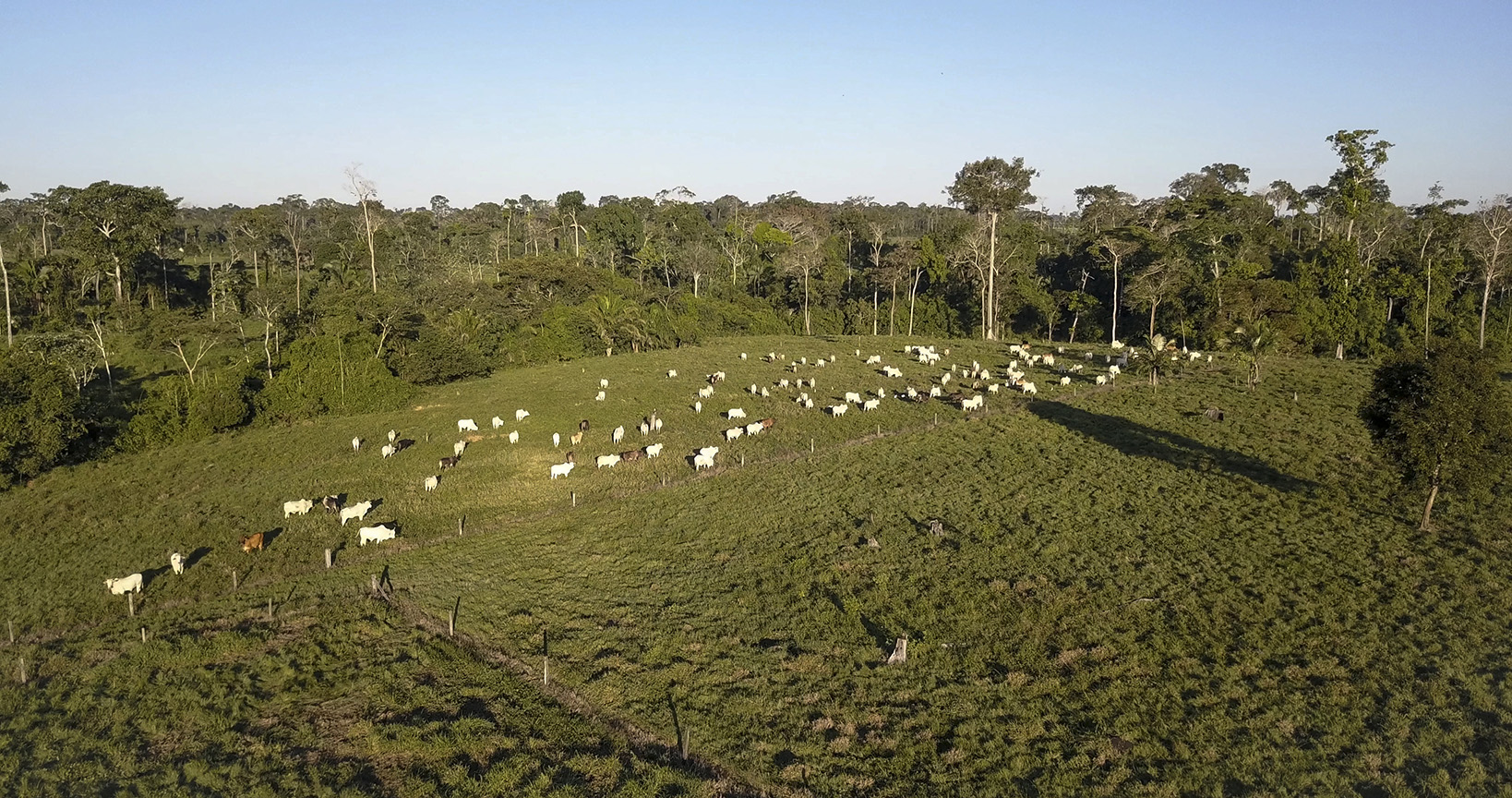
Nearly 400 kilometers separate the towns of Xapuri and Manoel Urbano, and most of this distance is covered by the BR-364 highway. On this main artery running through Acre, a single lane paved highway with almost no curves, the craters are big enough to shred truck tires or swallow small cars whole. On the stretch that separates the two towns, there is almost no forest to be seen, only light green grassland dotted with beef cattle. In Manoel Urbano, a small town with potholed roads and unkempt plots of land, people work almost exclusively in public service and very few have even heard of the green economy.
But close by, about an hour upriver, is one of the most controversial examples of Acre’s environmentalism: the Purus project, a private initiative of REDD covering 35,000 hectares. The project is not directly associated with the state government, but it is hailed as a symbol of the green economy. It was created by the former mayor of Sena Madureira, Normando Sales, formerly of the center-right Democrat Party (DEM). The program is certified by foreign companies and the non-emitted carbon is purchased by various business projects. Part of the credits purchased by FIFA to offset the Rio World Cup, for example, came from there.
The first controversy involves the land where it is installed: three traditional rubber tapping areas where 24 families depend on farming and the forest for subsistence. Since the arrival of the project, some of these traditional inhabitants say they are facing pressure to stop planting, hunting and clearing land.
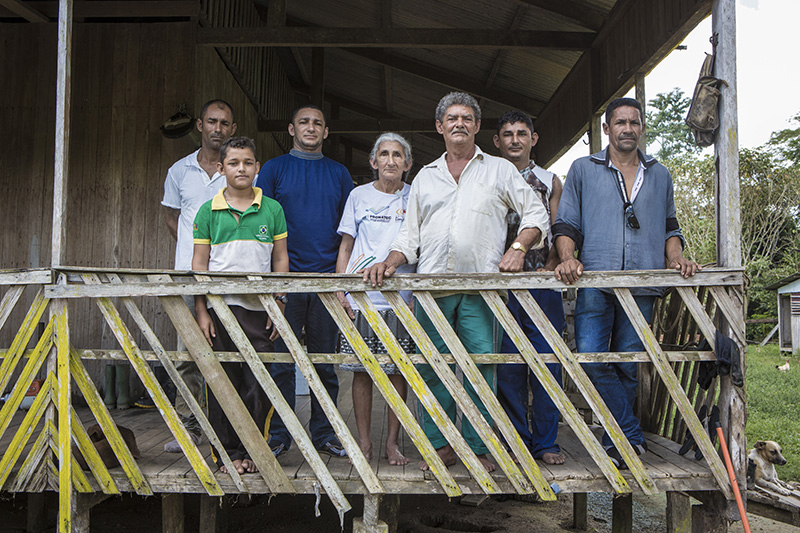
“We are caboclos of the forest, but that doesn’t mean that city people can come here and cheat us,” said the 69-year-old former rubber tapper Antônio Leite Cardeal on the veranda of his house that overlooks the land known as Seringal Itatinga. Cardeal, who moved there in 1964 when he was a teenager, said that about 10 years ago some lawyers from the project approached him to offer a deal. Their proposal, which did not take into consideration the community’s traditional way of life, was to partition a hundred hectares and give it to the squatters who have lived in the region for years.
You wouldn’t be allowed to light a fire, you wouldn’t be allowed to hunt, you wouldn’t even be allowed to light a cigarette – Antônio Leite Cardeal, Former rubber tapper
However, their adult children who had already set up home in the area were not included in the deal, which as far as the former rubber tappers were concerned made the offer unattractive. To receive the carbon credit, they would not be able to raise animals or plant crops on the land. “You wouldn’t be allowed to light a fire, you wouldn’t be allowed to hunt, you wouldn’t even be allowed to light a cigarette,” he said. When he refused, he received offers of upgrades and a “salary” of R$300 for his wife with whom he fathered 11 children. The amount is less than a third of the national minimum wage, which currently stands at R$937.
As a result of the resistance, the founders of the project, according to the former rubber tapper, filed complaints to the state environmental agency over their use of fire to clear land, which resulted in a fine of more than R$13,000. “We have a culture here,” said Cardeal. “Now tell me why it’s fair to fine us for clearing land when the headquarters of the project is full of cattle?” What’s more, said Cardeal and the other rubber tappers, the project went ahead without the consent of the local residents, which was a prerequisite for the project to be certified. In July of this year, there was a hearing between the residents and the “owners” of Purus. Cardeal said that the former mayor Normando Sales, of Purus, told the prosecutors that they had already reached a consensus. “That never happened,” said Cardeal, who together with the other residents started to learn about the sale of carbon credit in order to resist.
It really was a mistake having cattle there – Normando Sales, Former mayor of Sena Madureira
On the day when the Repórter Brasil team visited the headquarters of the project, one tradesman, who identified himself only as Agostinho, was at the site assessing 46 head of cattle that were loose in the grazing land that had been opened in the heart of the forest maintained for capturing carbon. It was the second time that he had visited the site. On the first occasion, six months earlier, he said he had assessed 100 animals. But no sale was made. “It really was a mistake having cattle there,” said Normando Sales three days later, in his office in Rio Branco. He did not say how much he earned from selling credits nor which companies purchase them.
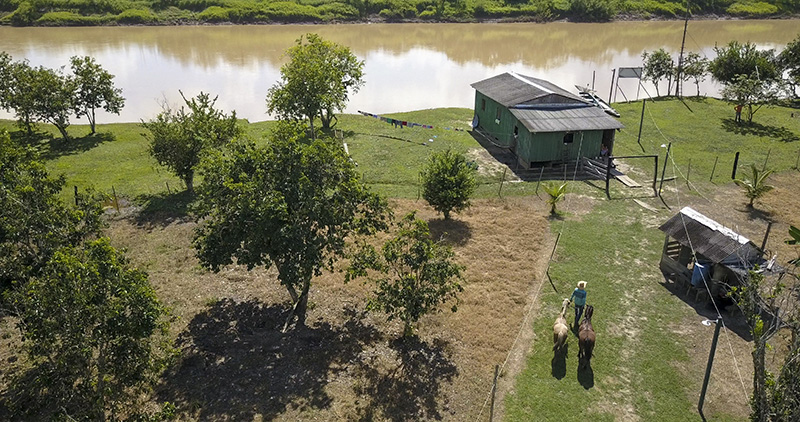
Besides the cattle, local residents say the website of the project uses photographs of healthcare treatment provided at the headquarters of the project and schools that, in fact, are municipal services that do not serve the local population. In response, Sales said that at no point did he claim the activities pictured on the website were directly linked to the local population.
“Let’s take a look at what’s going on at Purus,” Governor Tião Viana told an advisor in the presence of the Repórter Brasil team, after being informed about the existence of cattle at the headquarters. Although it is not directly associated with the state government, the project is hailed as a symbol and its flaws are another stain on the green economy.



